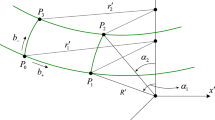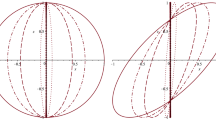Abstract
ACCORDING to the whirl theory of light and matter1, the whole physical world is the manifestation of Maxwell's electromagnetic waves. The fundamental particles of matter, and the photons, are represented by integral solutions of Maxwell's equations in vacuo, in cylindrical co-ordinates. For the former the integral is taken from a very low limit of the variable parameter of the integrant solution to infinity, while in the latter the interval of integration is much smaller. The forces are determined from the standard equations of classical dynamics as the derivatives of the exchange integrals of electromagnetic fields of interacting entities with respect to parameters defining their mutual position. The necessary condition of physical validity of these forces is the synchronism between the fundamental frequencies of the entities or their sub-harmonics. In the case of gravitation the sub-harmonics are due to the ‘micro-precessions’ of the entities, of about 8.3 × 10−7 sec.−1, caused by their inherent eccentricity of about 10−10 h/mc. In this very slow motion the wave-length of de Broglie's waves (which are inherent in these solutions of Maxwell's equations) is about 1012 cm. They are called the ‘macrowaves’ The macrowaves produce the mutual synchronization of micro-precessions. The resultant macrowaves of thus synchronized particles constituting large axially symmetrical bodies, such as the Sun or the planets, form co-axially revolving wave systems with radial standing waves. The orbits of planets are situated in the troughs of the latter.
This is a preview of subscription content, access via your institution
Access options
Subscribe to this journal
Receive 51 print issues and online access
$199.00 per year
only $3.90 per issue
Buy this article
- Purchase on Springer Link
- Instant access to full article PDF
Prices may be subject to local taxes which are calculated during checkout
Similar content being viewed by others
References
a, Japolsky, N. S., Phil. Mag., 19, 934 (1935); b, 20, 417 (1935); c, 20, 641 (1935); d, 22, 537 (1936); e, 22, 1003 (1936); f, Proc. Nat. Acad. Sci. India, 9 (4), 213 (1939); 10 (1), 19 (1940); g, Nature, 137, 582 (1936); h, 154, 20 (1944); i, 159, 580 (1947); j, Pakistan J. Sci. Res., 111 (Oct. 1949); k, 1 (Jan. 1950); l, Bull. Soc. Belge de Phys. (Jan. 1958).
Kraus, John D., Nature, 178, 687 (1956).
Author information
Authors and Affiliations
Rights and permissions
About this article
Cite this article
JAPOLSKY, N. Deflexion of Light in the Gravitational Field of the Sun. Nature 189, 651–652 (1961). https://doi.org/10.1038/189651b0
Issue Date:
DOI: https://doi.org/10.1038/189651b0
Comments
By submitting a comment you agree to abide by our Terms and Community Guidelines. If you find something abusive or that does not comply with our terms or guidelines please flag it as inappropriate.



